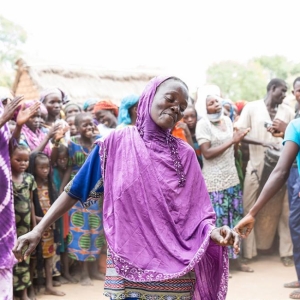Indicators in this domain assess the extent to which migrants have the same status as citizens in terms of access to basic social services such as health, education, and social security. It also describes the rights of migrants to family reunification, to work, and to residency and citizenship. The ratification of the main international conventions is also included within this domain.
Indicators in this category look at the extent to which migrants have access to certain social services such as health, education and social security. They also examine measures to ensure integration and access to work.
Indicators in this domain assess countries’ institutional, legal, and regulatory frameworks related to migration policies. Domain 2 also reviews the existence of national migration strategies that are in-line with development, as well as institutional transparency and coherence in relation to migration management. This domain also investigates the extent to which governments collect and use migration data.
Indicators in this category assess the institutional frameworks of cities for migration. This area also examines the existence of migration strategies consistent with development objectives, as well as institutional transparency and coherence in migration management.
This domain focuses on countries’ efforts to cooperate on migration-related issues with other states and with relevant non-governmental actors, including civil society organizations and the private sector. Cooperation can lead to improvements in governance by aligning and raising standards, increasing dialogue and providing structures to overcome challenges.
Indicators in this category focus on cities’ efforts to cooperate on migration issues with the national government as well as other cities and relevant non-governmental actors, including civil society organizations and the private sector.
This domain includes indicators on countries’ policies for managing the socioeconomic well-being of migrants, through aspects such as the recognition of migrants’ educational and professional qualifications, provisions regulating student migration and the existence of bilateral labour agreements between countries. Indicators equally focus on policies and strategies related to diaspora engagement and migrant remittances.
Indicators in this category assess cities’ initiatives in terms of international student mobility, access to the labour market and decent working conditions for migrant workers. Aspects related to diaspora engagement and migrant remittances are also included in this domain.
This domain studies the type and level of preparedness of countries when they are faced with mobility dimensions of crises, linked to either disasters, the environment and/or conflict. The questions are used to identify the processes in place for nationals and non-nationals both during and after disasters, including whether humanitarian assistance is equally available to migrants as it is to citizens.
Indicators in this category examine the type and level of readiness of cities to deal with aspects of mobility crises. The questions focus on the processes in place for citizens and non-citizens both during and after disasters, especially if humanitarian assistance is available for migrants and citizens.
This domain analyses countries’ approach to migration management in terms of border control and enforcement policies, admission criteria for migrants, preparedness and resilience in the case of significant and unexpected migration flows, as well as the fight against trafficking in human beings and smuggling of migrants. It also assesses efforts and incentives to help integrate returning citizens.
Indicators in this category look at the cities’ approaches to migrant safety as well as return and reintegration policies and the fight against trafficking in persons.
This Profile describes examples of well-developed areas of the Municipality of San Cristóbal de La Laguna (Spain) migration governance structures and areas with potential for further development, as evaluated through the six domains of the Migration Governance Indicators (MGI). These address migrants’ rights, a “whole-of-government” approach, partnerships, socioeconomic well-being of migrants, the mobility dimensions of crises, and safe and orderly migration.
Click the icons on the wheel to explore the key findings.
The Migration Governance Indicators (MGI) initiative is a policy-benchmarking programme led by the International Organization for Migration (IOM) and implemented with research and analysis from the Economist Intelligence Unit. Funding is provided by IOM Member States.
Migration Governance: examples of well-developed areas:
- La Laguna has specific mechanisms to help all foreigners obtain access to municipal services, regardless of their migration status.
- Local authorities have a strategy to combat hate crimes, violence, xenophobia and discrimination against migrants, and have carried out information and awareness-raising campaigns aimed at fighting xenophobia and exclusion.
- In La Laguna, there are specific procedures and measures aimed at ensuring the protection of migrant children, unaccompanied minors and children left behind.
Areas with potential for further development:
- The development of specific measures ensuring migrant participation in occupational training programmes is an area with potential for further development.
- The municipality does not provide legal counselling services to migrants.
- The development of mechanisms to facilitate access to housing at the local level for migrants and the expansion of local residential and housing capacity are areas with potential for improvement.
Migration governance: Examples of well-developed areas:
- Since 2021, La Laguna’s Municipal Board for the Reception of Migrants and Refugees has acted as a coordination mechanism and provided a space for reflection and social work in which all the institutions, organizations and associations assisting these groups participate.
- The Municipal Board for the Reception of Migrants and Refugees promotes the vertical coherence of local migration policies.
- The Single Permanent Committee, created in May 2021, promotes inter-administrative and citizen coordination of migration management in La Laguna.
Areas with potential for further development:
- No department at municipal level has been formally delegated to coordinate the implementation and management of services for migrants.
- The preparation of a local migration strategy is an area with potential for development.
- The provision of clear and transparent information on migrants' rights is an area with potential for development.
Migration governance: Examples of well-developed areas:
- Local authorities cooperate with non-governmental and civil society organizations, and with migrant associations, to set the agenda and provide additional assistance and information services for migrants.
- The Office of the Mayor collaborates on a formal basis with academia to inform local migration-related policies and programmes.
- There are bilateral programmes for cooperation on international migration between Spanish cities.
Areas with potential for further development:
- Formal cooperation between the municipality and the private sector to set the agenda and implement local policies and programmes on migration is an area with potential for further development.
- The exchange of ideas and experiences of La Laguna with other local entities belonging to the Network of Refugee Host Municipalities represents an area to be strengthened.
Migration governance: Examples of well-developed areas:
- In January 2022, La Laguna’s Local Development Department launched a personalized job search, counselling and assistance service for residents of the municipality, including migrants.
- As part of the Local Development Services, La Laguna provides business counselling to entrepreneurs and established businesses, which is also available to migrants.
- Local authorities have adopted general measures to promote gender equality, which also apply to migrants.
Areas with potential for further development:
- The establishment of specific measures to promote the ethical recruitment of migrant workers is an area with potential for development.
- At the local level, no evaluations have been carried out to assess the local labour market demand for migrants.
- The implementation of specific local programmes to support financial literacy or to promote the financial inclusion of migrants and their families is an area with potential for development.
Migration governance: Examples of well-developed areas:
- The municipality’s Citizen Security and Mobility Service is the public service working to study and prevent situations of serious risk, disaster or public calamity, and to protect and assist people.
- The Municipal Board for the Reception of Migrants and Refugees, established in 2021, brings together relevant institutions, organizations and groups to coordinate municipal activities to strengthen the management of large-scale population movements.
- At the local level, communication systems have been set up to receive information on crisis developments and how to access assistance services.
Areas with potential for further development:
- Local authorities have yet to develop a contingency plan for managing large-scale movements of people in times of crisis.
- La Laguna has no communication system enabling members of the public to communicate their needs to local authorities in an emergency, and no mechanism that takes into account the specific vulnerabilities of migrants.
- Local authorities have drawn up no strategies to address migratory movements caused by natural disasters, environmental degradation and the adverse effects of climate change.
Migration governance: Examples of well-developed areas:
- Local government workers receive training on migration issues and the rights of migrants.
- The municipal government implements autonomous community mechanisms to guarantee the access of migrants to justice, including public security.
Areas with potential for further development:
- There is no indication that La Laguna’s local police force has received training related to migration issues or the migrant population.
- La Laguna does not yet have a municipal agency or strategy to combat human trafficking, or specific measures to combat the labour exploitation of migrant workers.
2022 September




